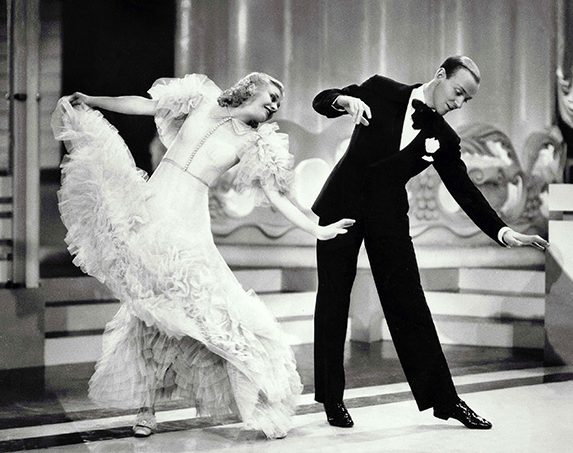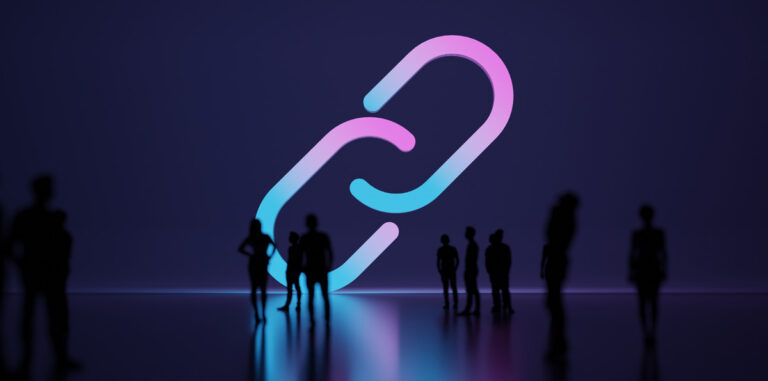What: Five U.S. Hispanic female marketing leaders talked to Portada about the nuances and obstacles on the way to the top of the ladder and the differences between men and women’s paths to success. Interviewees: JCPenney’s Ana Lucía Soto, Starcom’s Darcy Bowe, Canvas Worldwide’s Cynthia Dickson, GroupM’s Mebrulin Francisco, Grupo Salinas Telecom’s Fabiola Silva.
Why it matters: Although women are increasingly more visible in the industry, there’s still a long path to go towards women achieving their full potentials and pushing their untapped capabilities to the maximum, especially for Hispanic and African-American women, who feel their barriers are even higher.
What doesn’t kill you, makes you the mother of creativity
 Ann Richards once said: ”If you give us the chance, we can perform. After all, Ginger Rogers did everything that Fred Astaire did. She just did it backwards and in high heels.” Ana Lucía Soto, Media Manager at JCPenney, mentions this quote by the second woman ever to serve as governor of Texas while talking about women’s struggle for equality in this and in any industry. Advocating for female inclusion, much has been said about female leaders and, paradoxically, about the traits that make them “different from men”, or “unique”. But it’s not that women are born with a sixth sense, or the gift of clear communication, or female superpowers of strength and flexibility; plain and simple, we were born in a society in which being a woman is just harder by default.
Ann Richards once said: ”If you give us the chance, we can perform. After all, Ginger Rogers did everything that Fred Astaire did. She just did it backwards and in high heels.” Ana Lucía Soto, Media Manager at JCPenney, mentions this quote by the second woman ever to serve as governor of Texas while talking about women’s struggle for equality in this and in any industry. Advocating for female inclusion, much has been said about female leaders and, paradoxically, about the traits that make them “different from men”, or “unique”. But it’s not that women are born with a sixth sense, or the gift of clear communication, or female superpowers of strength and flexibility; plain and simple, we were born in a society in which being a woman is just harder by default.
Nowadays, women are able to run on the same tracks as men when choosing their career paths, but they still have to do it on crutches. But rather than being overpowered by their limitations, it seems that hardship forges creativity, and women have been sailing on the hardest of ships since the beginning of civilization. Obstacle after obstacle, female leaders have been fine-tuning their problem-solving abilities and cultivating a sense of tenacity and perseverance. It may be a myth that women are born with more empathy and sensitivity than men, but it’s an undeniable truth that someone who’s had many problems must also have many solutions.
A gap so wide it requires a leap of faith

But however resourceful and determined they train themselves to be, more often than not women are faced with a series of circumstances more powerful than their will to succeed. For any woman looking to break with conventions, the numbers on equality dabble on the realm of disturbing not just for high-management levels, but onset from the very first step of the ladder as well. “We tend to focus on CEO positions and are alarmed about the fact that there are only 24 Women CEO’s within 2018 Fortunes top 500 companies, but we also need to look a couple of steps lower in the corporate ladder and address the fact that women’s progress is stalling at lower levels of a company’s pipeline,” says Mebrulin Francisco, Managing Partner, Director Marketing Analytics, Multicultural at GroupM.
The problem is that it’s not an isolated issue; on the contrary, the disparities are deeply rooted in American society’s attitudes and behaviors that still see women in executive positions as some kind of satire of their male counterparts. “The other reason that women are not getting to these top executive positions,” adds Francisco, “is that work culture in America still has not evolved to accommodate women in business. The U.S. is the only developed country that does not guarantee paid maternity leave so women have to make hard choices when thinking about family planning. Even among the organizations that offer favorable paid maternity leave policies (12 – 18 weeks), the U.S. working women still struggle with inflexible working hours, a gap in wage (women continue to get paid less than men), and a culture that holds them to unrealistic standards and shaming (i.e women tend to get asked more about who takes care of the children when they are working than men do)”.
Nothing about this topic is black and white
 Perhaps one of the things fueling the idea that working women are just mothers with a side job, as if both roles were mutually exclusive, is a concept perpetuated by none other than women themselves. It’s still predominantly a matter of personal perception and subjective experiences. For example, Fabiola Silva, Marketing Director at Grupo Salinas Telecom, says: “I believe the reason is directly linked to women becoming mothers and taking care of their families, I do not believe it has to do with discrimination”. But even if it has appeared so far that we have a long way to go to even fathom the idea of asking a man whether he’ll put his career on hold to become a father, perhaps we could start believing in the signs that point out towards a society that is more based in equality, at least in a few countries in the world.
Perhaps one of the things fueling the idea that working women are just mothers with a side job, as if both roles were mutually exclusive, is a concept perpetuated by none other than women themselves. It’s still predominantly a matter of personal perception and subjective experiences. For example, Fabiola Silva, Marketing Director at Grupo Salinas Telecom, says: “I believe the reason is directly linked to women becoming mothers and taking care of their families, I do not believe it has to do with discrimination”. But even if it has appeared so far that we have a long way to go to even fathom the idea of asking a man whether he’ll put his career on hold to become a father, perhaps we could start believing in the signs that point out towards a society that is more based in equality, at least in a few countries in the world.

One of the more subtle dangers of the idea that women are mothers while fathers are workers is thinking their traditional household roles will somehow translate untouched into the workplace, and that their motherly warmth and instincts will be paramount in building an intimate communicative relationship with customers. “It is important to have female marketers and media executives for similar reasons that moms have different approaches to problem-solving and managing the household than dads”, asserts Cynthia Dickinson, Associate Director of Multicultural Strategies at Canvas Worldwide. “There’s a different perspective to offer, one that is empathetic and nurturing to build relationships with consumers and colleagues/staff. I feel there’s also a different reasoning that offers alternative approaches to problem-solving which makes for positive collaborations and innovative thinking”. But assuming these biological traits could be applied in the workplace effectively as alternative approaches, could they help create a positive strategic difference between men and women or will they just widen the schism and continue to encase women within the labels they’re trying so hard to shake? Differences are good, so why aren’t more companies taking advantage of the difference a woman can bring into the board room?
How different is the difference?
Does equality mean having to think the same? Do men and women have radically different ways of performing and executing their decisions? It doesn’t matter whether men come from Mars and women from Venus; marketing happens on earth, and it happens regardless of the gender of the consumers. One of the most-frequently-mentioned attributes and conceptions of female marketers is that they have a deeper understanding of their own sex, and that this understanding will automatically cater to their specific needs more effectively than men. Some people go as far as thinking these “biological” differences are etched onto our genderized DNA. Cynthia Dickson assures that “women tend to have more empathy than men and can provide that insight in understanding the consumer pain points prior to making a purchase or deciding to use a service”.

“Women may understand women more intimately, but not everyone is the same. There should be due diligence used in creating marketing initiatives that dig deep into the target consumer, their motivations, passions and interests and reasons for needing the product or service,” declares Darcy Bowe, SVP, Media Director at Starcom. After all, marketing, like many other disciplines, is intrinsically bound to a practically scientific method which involves testing a premise until it rings true to the majority, paying attention to the signs and happenings, asking as many questions as possible to delve deep into a broad understanding of the consumer’s psyche much more than it involves the so-called “female intuition”. However, the artistic element of marketing is just as important as the scientific one, which leads me to the idea of empathy.
While it’s true that “Women have been leading household purchasing decisions for years, even before hitting the entering the workforce”, and that“[they] are often the ultimate decision-makers and consumers” as pointed out by Ana Lucía Soto, it’s also true that empathy is not exclusive to women. It would risky to rely on the fact that women understand other women, as each woman can be radically different, and the core ideal of today’s marketing is averaging human needs, not just appealing to one type of person.
At the end of the day, in optics and in culture, as few as two different perspectives can give you depth. “We have plenty of studies stating that more diverse leadership equates to more successful and profitable companies”, explains Mebrulin Francisco. “So not only is it the right thing to do morally, but having diverse marketers and media executives makes sense from a pure business standpoint”.
The top isn’t where everything stops, it’s where everything starts

So, you got to the top, now what? Some might say the hard part starts only when you get what you want. It’s not enough starting a career in leadership; being a leader implies learning how to lead, which adds a great amount of responsibility, regardless of gender. One thing all interviewees agree on is that women in power must help other women climb the ladder. “Representation matters!,” says JCPenney’s Ana Lucía Soto. “While representation has certainly increased and gained traction over the past few years, women need to see more women in executive roles including holding seats on executive boards.”
Therefore, visibility is really important, and especially more when talking about Hispanic and African-American women. “It’s great to see brands, such as Revlon, announcing the first female CEO in 85 years. A Dallas local that I love hearing speak is Ivonne Kinser from Avocados from México, she’s been an amazing leader of powerful digital campaigns and gained great recognition for being a trailblazer in the marketing world,” adds Ana Lucía. And  these are not the only examples: “This year alone a couple of companies broke headlines by placing women in CEO positions, including Heineken, who named Maggie Timoney the first female CEO in the beer category. GM is the first car company to have a female CEO and CFO, and John Hancock, a financial company, also named its first female CEO in 2018,” comments Mebrulin Francisco. “These are just a few examples of women shattering glass ceilings and putting themselves in places that they have traditionally not garnered representation at top levels.”
these are not the only examples: “This year alone a couple of companies broke headlines by placing women in CEO positions, including Heineken, who named Maggie Timoney the first female CEO in the beer category. GM is the first car company to have a female CEO and CFO, and John Hancock, a financial company, also named its first female CEO in 2018,” comments Mebrulin Francisco. “These are just a few examples of women shattering glass ceilings and putting themselves in places that they have traditionally not garnered representation at top levels.”
The only thing that is clear after talking to all these brilliant interviewees is that, independently from the reasons why there aren’t that many women in c-level positions, diversity is important. Things are starting to change, women are being more recognized and this in turn is leading to more women believing they can climb the ladder. As Francisco mentions, “recognizing women in leadership positions is a critical step to chip away old paradigms of thinking. One of my favorite quotes is ‘if you can’t see her you can’t be her'”, and thus the best first step towards diversity is talking about what is already diverse and making sure everyone knows it’s possible to get there.
[ctalatinb]







